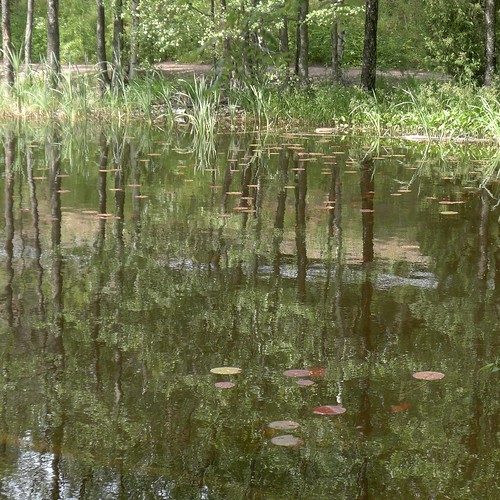These photographs were all taken at lake Kaitalampi, where I had a walk with my daughter. I couldn't decide which one is best, so I am posting all four.
(Posting title is from the poem Vapor Trail Reflected in the Frog Pond by Galway Kinnell.)
Abundance
4 hours ago







6 comments:
3 & 4 for me. My favourite reflections are often the ones that work best when viewed upside down.
@Cedric: Thanks!
I agree that there is something special about those reflections where you have to work out what is the original subject.
I find it remarkable how you always refuse to process images. I certainly would have used "Levels" and "Curves", especially on #2 (my favorite, because it is the most harmonious), to "fix" the histogram. Not that it would necessarily improve the image. I just tried it, for me it does, but it definitely deviates from what you must have seen. Let's call it more of a taste :)
It's probably different when you print. On paper the dynamic range is much smaller anyway and I guess there it would make sense to spread the histogram apart.
@Andreas: I'm just too lazy to work much with the photographs on the computer - there will always be new ones to be taken, why spend much time on those already taken? Occasionally I do some "fixing", though, when the photograph is otherwise good but the exposure is off, and the daily catch is limited.
On the other hand, I have been thinking about a photo book project, SoFoBoMo style, in which there would be need to do some post-processing of the photographs, but so far I haven't got the motivation to start the thing. Maybe during the autumn...
Well, just in case it came across like negative criticism, it's not meant that way. I actually like what you do and it gives your photography an adorable consistency. Nothing wrong with that. It's more that I can't resist tinkering.
@Andreas: It is quite right to question my approach, as I'm not always convinced that the approach I'm using really works: getting the photograph right in the camera so that little post-processing is necessary.
This is a handicap, as it limits the results you can get, but on the other hand, some limitations can be liberating.
My idea has been that trying to get it right trains the "photographer's subconscious" more effectively that allowing "second changes" at the post-processing phase. Or maybe I should say that this is how I explain the approach that feels natural to me.
Post a Comment